9C2 Global Studies
Section outline
-
Kia ora...Students and welcome to the first week of school. I trust that you all had a wonderful summer break and are fully charged to begin this terms learning. Our learning context is: The Me in Team. With this idea we will explore the different styles of leadership and examine how individuals make an impact in a team.Our focus will include impacts we make in our local communities. To do this we need to examine the different problems that exist in Flatbush( mostly environmental issues), and think of how teamwork can address these issues

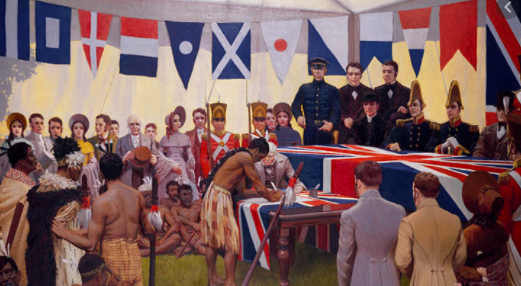
Success Criteria: I can/have...
*Researched the cultural identity of Maori and British cultures from the past to the present
*creatively design a digital cartoon or storyboard that explores early settlers and the Treaty of Waitangi and shows my values that connect with the Treaty.
Activities:
- This week is an important one for our country as we celebrate the Treaty of Waitangi on the 6th of February. Your task is to research a speech ( 2019 or 2020) delivered by our Prime Minster Jacinda Ardern and discuss the key messages she has delIvered on this monumental day. What are your views on our Prime Ministers speech.
- Watch video on Early Maori cultures in NZ and answer the following questions; When did Maori people arrive in NZ and from which locations in the world.How did they arrive here. Describe the waka. Discuss the types of tribes found at that time and where did they settle. Discuss the foods Maori eat and how they collected as well as prepared traditional foods. Show the cultural dress/ music/ art and dance that is symbolic to them. What are the languages spoken.
- Examine the conflict between British and Maori people.Also explain with images the meaning of the treaty of Waitaingi.
- Do you think Maori cultures identity today is the same from few hundred years ago. Explain. Also show how the "west has influenced local Maori Identity.
- how does this treaty have greater significance to our multi- cultural society today. Think of values and connect your reasons to this.This must be explored in good detail.
- Indicate your information on a story board. See example in the classroom.
- Can you express how Me in Team ties in with the Treaty of waitangi.
Resources:
The Maori - New Zealand in History
history-nz.org/maori.htmlwww.canva.com › create › storyboardsFree Online Storyboard Maker: Design a Custom Storyboard ...
EXPLORE / TŪHURA learning intentions:
- We are EXPLORING...to investigate students personalised immigration story and the vocabulary associated with this idea
- We are EXPLORING...to research the Treaty of Waitangi and its significance for us today in NZ
- We are EXPLORING...to discover the skills required to camp and research information on Camp Adair
-
Kia ora...students and welcome to week 2. For this week we will explore in detail what the context Me in team means. The ideas we will draw reference to include people as leaders in business, politics, sports, communities. and as the youth. However we take a pathway on focusing is on problems in our communities and looking at different roles models that help address these issues. We will focus on our commitment. to help our community thrive and shine.
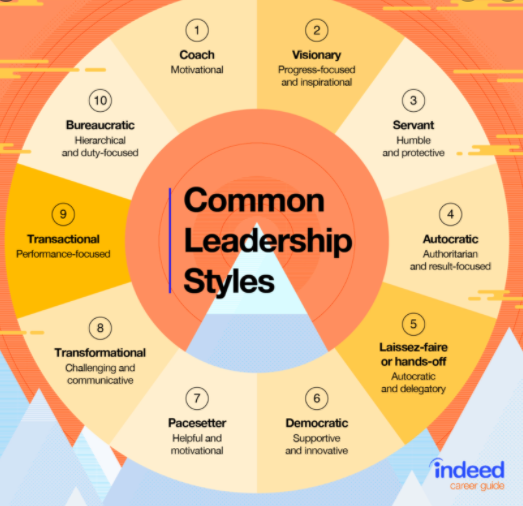
Success Criteria: I can/have...
- Brainstormed ideas that link with Me in Team
- Determine what is leadership and team work.
- I have researched what are the different leadership styles and views one each style.
- Connect people that are linked to the various leadership styles
Activities:
- Watch the Video on teamwork
Express why team work is both important and challenging.
Think of the many ideas that link with teamwork as well as leadership. Do you think there is a place for ME in the concept of Team. Explain with examples why me is relevant.
Read this document on leadership styles and answer the table below:

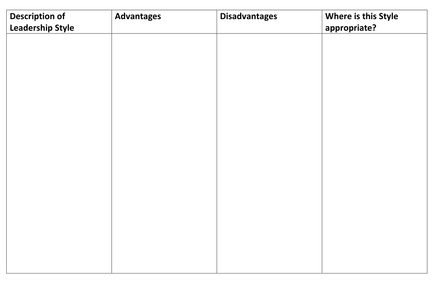
5. See the whiteboard on a range of famous people that have lead a team and contributed to success in the country or globally. Who stands out to you the most based on their style of leadership and why? ( ideas include Oprah Winfrey. Richard Branson, Richie Macaw, Hitler, Mandela, Donald trump, Malala and Greta Thunder-burg. Share, pair and discuss your response.
6. Based on the disadvantages of some leadership styles, which leadership would be most recommended to ensure collaboration, effective ME management as well as team success.
7> We will begin to take the key components of leadership and teamwork to understand what makes a community successful and function well. To do this our learning journey will explore and focus on the problems that exist in our community and ways we can be involved to make it better.
Write here...
-
Kia ora...students and welcome to week 3. For this week you will explore the history of Flatbush and the many changes it has undergone over the past decade.

Success Criteria: I can/have...
- Researched the history of Flatbush and have an understanding of the significant changes our community has undergone
- understood the reasons for these changes
- taken photographs of current projects and developments that indicate our community is constantly evolving.
Activities:
1. See images on white board on Flatbush in the past: example old school buildings: location/design/type of educational curriculum and delivery/ resources: compare with today MHJC. Whats positive about the changes and perhaps whats negative or challenges with this change?
Go onto google maps to see the map and landscape of Flatbush. How does this compare with the past.
Indicate the different activities involved in Flatbush. Describe the various types of primary activities( with supporting images if you can).
What was the poulation dynamics during this time. Eventually you would compare this with today.
2. By working in pairs create a visual timeline on the history of East TAMAKI Flatbush to people/ heritage buildings/ activities and events. Write down a few key points below each image.What do you think of this past era( up to 100 years ago).Reflect on significance of culture/ activities and buildings.EACH GROUP WILL WORK ON ONE IDEA EXAMPLE: COMMUNITY LIFE OR EDUCATION OR HERITAGE BUILDINGS OR TRANSPORT .
3. By making predictions and assumptions :Where are these people now?What has happened to the important buildings and events? Has these continued? Examine why?
4) What does Flatbush look like today? Show images. Discuss at least 3 reasons for thees changes.In detail provide an understanding of why housing is ever growing here. What is the average cost of a house in Flatbush community? How many people live here( residents). Do we need services to support this population? Indicate the services that are established or establishing itself/
5) Show a deep understanding of the up-coming Ormiston Town Centre. Use a plan and images to indicate its location and services it will offer. Who was the architect for this design.
Resources:
Flat Bush - Wikipedia
Resources:
Immigration definition and meaning | Collins English Dictionary
Migration: Pull and Push Factors - eSchooltoday
eschooltoday.com/migration/the-pull-and-push-factors-of-migration.htmPush-Pull Factors that Determine Population Migration - ThoughtCo
https://www.thoughtco.com › Humanities › Geography › BasicsStatistics | Immigration New Zealand
https://www.immigration.govt.nz/about-us/research-and-statistics/statistics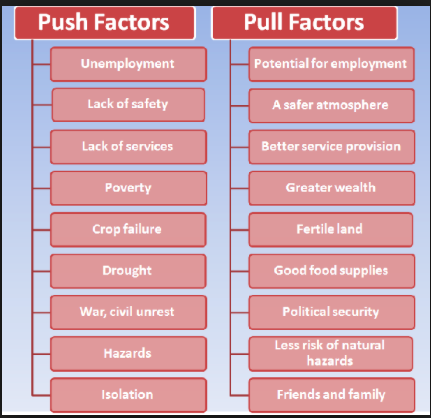
Ormiston Town Centre
https://ormistontown.co.nz/Ormiston Town | Todd Property
https://toddproperty.co.nz/projects/ormiston-townPanuku | Ormiston
https://www.panuku.co.nz/ormiston-town-centreFOCUS / ARONGA learning intentions:
- We are FOCUSING...on understanding the history of Flatbush and identifying the map of key places/ activities in this location
- We are FOCUSING...researching the changes to our community ie immigration, development etc. and the impacts of these changes
- We are FOCUSING...explaining the consequences of development in our community onto people/ environment and the economy
-
Kia ora...welcome to week 5. For this week your focus is to research and understand the impacts of immigration and development onto people/ the economy and environment of Flatbush.For this you must weigh both the benefits and challenges.
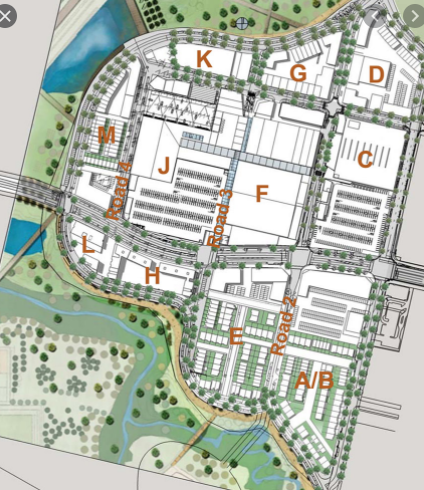

Success Criteria: I can/have...
- a good understanding of the problems and benefits immigration and development bring into the Flatbush community
- conducted research that include secondary sources eg websites/ newspaper articles as well as though primary sources( eg interviews and discussions with stakeholders in our community
Activities:
- Though research as well as your understanding as a resident of Flatbush write the benefits of immigration into this area. Think of economic and social development as a result of immigration. What challenges has immigration brought?
- Though research as well as your understanding as a resident of Flatbush write the benefits of the various development projects in Flatbush. Think of housing/ roads/ schools/ local businesses established and certainly the upcoming Ormiston Town Centre.In detail consider the harm these projects have lead to onto the environment and people.
- Sketch or show images if development continues to rise in this locations. predict the consequences.
- Why is it important for government and developers to have a sustainable approach to community development?
- Indicate what has not been addressed in planning the Ormiston town centre: eg did it consider the impacts onto the wildlife previously living here?
Resources:
THE CAUSES AND ECONOMIC CONSEQUENCES OF ...
The Socio-Economic Impact of Urbanization - Humanitarian ...
Ormiston Town Centre - Todd Property
-
Kia ora...students and welcome to week 5. For this week you will create your visual( infographic) that shows the history of Flatbush, the reasons for development and consequences as a result. This must be submitted in the 3rd session of class this week.


Success Criteria: I can/have...
- Worked well / collaborated well as part of a team to research my ideas and create a visual that displays in depth the information on community challenges in Flatbush
- I have submitted my visual on time.
Activities:( This idea is based on the reaserch and work you have been involved with over the past 2 weeks.)You are finalising these ideas in the form of a visual.
1) By working in a team you are to collaborate by researching the history of Flatbush and the changes it has undergone over the past decade. In your discussion you must express reasons for these changes and the impacts it has had on people/ environment and the economy. Showcase you work in the form of a visual presentation/ infographic/ slideshow video.
2) Template:
Introduction
History of Flatbush( Farmland)
Development to Town Centre: Reasons
Positive impacts for the development
Challenges to the community.
My Views/ Conclusion
Bibliography
3) Resources: Include readings/ newspaper articles/ brochures/ videos/ interviews/ photographs that cab be included in the design of your work.- Think of all the teams in the era of 1800's and early 1900's in Flatbush that included farmers, teachers and dairy men. How did they work together to have a functioning community. Explain how the teams have changed today to various and different stakeholders. Think not only in terms of business but all stakeholders in the community eg cultural leaders, schools and families that are making a difference to our community.
4) Design your visual creatively with an artistic flow of ideas. See examples on the white board. This is due in the final session you have with me this week.
Homework:
Write here...FOCUS / ARONGA learning intentions:
- We are FOCUSING...on understanding the history of Flatbush and identifying the map of key places/ activities in this location
- We are FOCUSING...researching the changes to our community ie immigration, development etc. and the impacts of these changes
- We are FOCUSING...explaining the consequences of development in our community onto people/ environment and the economy
-
Kia ora...students. Now that you have understood the many challenges development brings to our community, your focus is to think of solutions to the problems identifies. Your must first research existing models that aim to reduce these problems. Thereafter come up with your own outcomes and models that may be better suited.
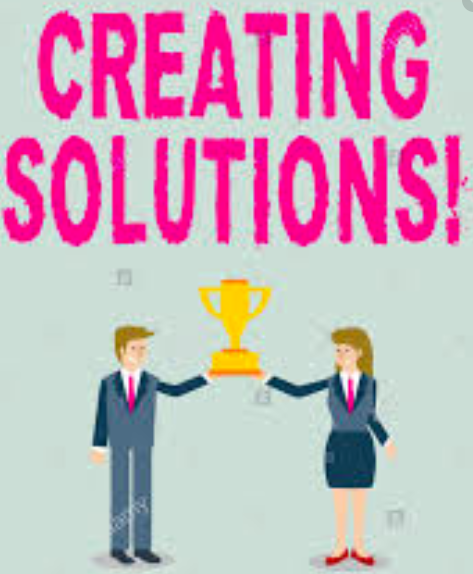
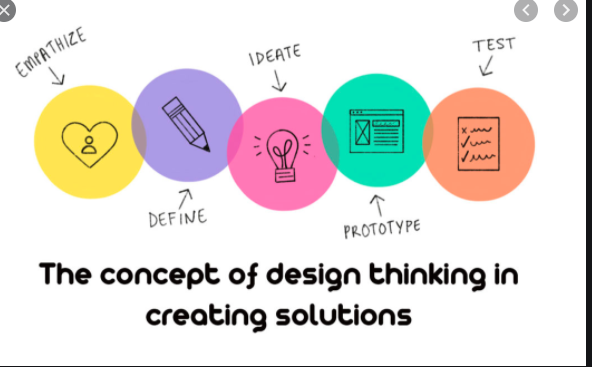
Success Criteria: I can/have...
- began to research existing models that address problems like traffic congestion, pollution and unemployment
- started to think of my own solutions that are realistic and practical
- adapt these solutions in our Community by creating a model.
Activities:
- See white board on images on the various problems that exists in Flatbush( These are the ideas you had discovered).Research what existing laws/ policies are there to reduce these problems . Discover ways in which organisations have sources action eg engineers, Planners etc.
- What do you think was effective about these current interventions. Where are the gaps... that do not provide the ultimate solution/ support or results.
- By addressing the gaps... you can think of ways in which to create your own models/ solutions to ONE problem identified. Work as a team. Brainstorm your ideas. Do a write/ and sketch to overcome the problem.
- Design your idea: First sketch your solution or outcome. Research how to make this. Bring in resources to class and begin to create.
- Present your model/ outcome/ solution/ prototype to the class.
- Write here
Homework:
Write here... -
Kia ora...students. Now that you have understood the many challenges development brings to our community, your focus create / design solutions to the problems identifies. Work as a team and have your model/ outcome or prototype designed in class.


Success Criteria: I can/have...
- began to research existing models that address problems like traffic congestion, pollution and unemployment
- started to think of my own solutions that are realistic and practical
- adapt these solutions in our Community by creating a model.
Activities:
- See white board on images on the various problems that exists in Flatbush( These are the ideas you had discovered).Research what existing laws/ policies are there to reduce these problems . Discover ways in which organisations have sources action eg engineers, Planners etc.
- What do you think was effective about these current interventions. Where are the gaps... that do not provide the ultimate solution/ support or results.
- By addressing the gaps... you can think of ways in which to create your own models/ solutions to ONE problem identified. Work as a team. Brainstorm your ideas. Do a write/ and sketch to overcome the problem.
- Design your idea: First sketch your solution or outcome. Research how to make this. Bring in resources to class and begin to create.
- Present your model/ outcome/ solution/ prototype to the class.
Homework:
Write here... -
Kia ora...Students. For this week you will present your ideas in class. Be open to questions and discussions. Also we will explore current trends in Flatbush other than urban development. Which leaders/ teams are making waves in our community. Are any of them include the youth.

Success Criteria: I can/have...
- presented my work to the class and able to and able to answer questions
- researched new trends in our community and the different people contributing to these trends.
Activities:
- Session 1: All teams to share your creative work on the changes and challenges in Flatbush community. You are encouraged to ask questions and peer review each others work. Here you must be respectful when making comments.
- Session 2/ 3: Through You tube/ Flatbush Grapevine and other local resources, discover who in our community are making marvellous contributions. Research what are they doing and why you think this is making an impact.Share your findings in class.
- How can you extend yourself to make contributions beyond our classroom and school community. Think of ideas that will make an impact to other youth, or a target audience that you feel requires support in any way.
Homework:
Write here... -
Kia ora...students. For the next two weeks we will begin a new idea that links with me in team. This will include identifying social problems amongst the youth and how teamwork is effective to overcome these.
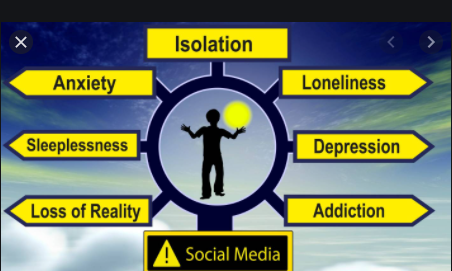
Success Criteria: I can/have...
- Identified social issues that the youth go through, mostly apt to New Zealand society
- As a team I have chosen on e social problem to discuss in detail
- Researched the reasons and impacts of these social issues
- Think about solutions to these problems and present ideas in a form of a visual presentation.
Activities:
- Watch video on common problems youth face today. How does this have significance in the society you live in and the friendship groups you have.
- Teaching example: Poverty affecting youth in NZ: REASONS/ IMAPCTS AND WHATS CURRENTLY DOEN. wHAT MORE NEEDS TO BE DONE.
- See this advert: and what are your views. How can You be a change to this issue in NZ.
- In groups think of one topic you want to research in detail. eg : Bullying, peer pressure, poverty, child abuse, etc. Write down reasons for the problems and the impacts this has onto the youth. Show statistics about the extent of this problem. How does the situation in New Zealand compare. to other parts of the world.
- As your recommendations to over come this social problem, identify who are the various teams that support the youth to get through this struggle. What are their roles and objectives eg: Youth councillors, religious youth camps, NGOS, social services. What would your role be if your were witness to someone you know going through a social problem.
- Finally design a story board that showcases what youth should do to overcome the problems( liked to your chosen topic). Let this be at least 8 blocks with an image and a good message attached to story .
- Present the story boar during week 10.
Resources:
Most Important Problems facing New Zealand in 2017 are ...
Social issues impacting New Zealand - Our Words Matter
Poverty 'entrenched' in New Zealand despite progress on ...
Storyboard That: The World's Best Free Online Storyboard ...
-
Kia ora...students. For the next two weeks we will begin a new idea that links with me in team. This will include identifying social problems amongst the youth and how teamwork is effective to overcome these.

Success Criteria: I can/have...
- Identified social issues that the youth go through, mostly apt to New Zealand society
- As a team I have chosen on e social problem to discuss in detail
- Researched the reasons and impacts of these social issues
- Think about solutions to these problems and present ideas in a form of a visual presentation.
Activities:
- Watch video on common problems youth face today. How does this have significance in the society you live in and the friendship groups you have.
- Teaching example: Poverty affecting youth in NZ: REASONS/ IMAPCTS AND WHATS CURRENTLY DOEN. wHAT MORE NEEDS TO BE DONE.
- See this advert: and what are your views. How can You be a change to this issue in NZ.
- In groups think of one topic you want to research in detail. eg : Bullying, peer pressure, poverty, child abuse, etc. Write down reasons for the problems and the impacts this has onto the youth. Show statistics about the extent of this problem. How does the situation in New Zealand compare. to other parts of the world.
- As your recommendations to over come this social problem, identify who are the various teams that support the youth to get through this struggle. What are their roles and objectives eg: Youth councillors, religious youth camps, NGOS, social services. What would your role be if your were witness to someone you know going through a social problem.
- Finally design a story board that showcases what youth should do to overcome the problems( liked to your chosen topic). Let this be at least 8 blocks with an image and a good message attached to story .
- Present the story boar during week 10.
Resources:
Most Important Problems facing New Zealand in 2017 are ...
Social issues impacting New Zealand - Our Words Matter
Poverty 'entrenched' in New Zealand despite progress on ...
Storyboard That: The World's Best Free Online Storyboard ...
-
Kia Ora Students. For this week we will do a reflection of our terms. Also, I will introduce you to Term 2's learning context.

Quiz: see whiteboard for online quiz as well as crossword puzzles.
-
Kia ora...students and huge welcome to term 2.I hope you had a wonderful summer break and ready to venture with your learning at school.Our learning context is our Cultural identity.
# strength of group enhances individuality / the most important thing in life is the connections we make with others. With this, we will examine who we are are/ where we come from/ the values we share that connect us to each other to build relations as well as identify skills we have or can learn to make new connections in our environment.

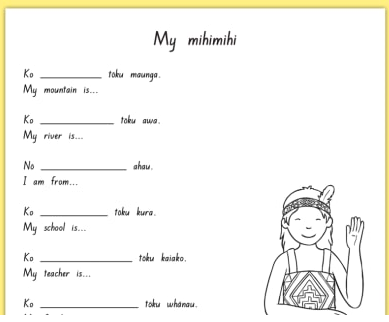
Achievement Objectives:
L3 Understand how the movement of people affects cultural diversity and interaction in New Zealand.L4 Understand how people pass on and sustain culture and heritage for different reasons and that this has consequences for people.
Success Criteria: I can/have...
- Understood our learning context by making links to ourselves/ friends and community
- Understood my immigration story and pepeha by creating a visual that describes me
Activities:
1) Let us brains storm our learning context and come up with ideas that link with who we are and our connections in our community. eg: We are all in this together as it is our first day at school? Discus our excitement/ fears/ expectations and values we share!
2) Write down what are you most important values and skills.Let us also examine the meaning of ket words like respect/ religion/ culture/ traditions/ heritage/ immigration/ changes and adaptation
3)Reflect on your immigration story . Research Who are you? Did you or you parents immigrate from another country? Why did you leave? What re the various values and practices of of culture you were exposed too from your birth country or parents birth country? Is it different or similar to the values of living in New Zealand.
4) Think of all the values you consider as an import part of who you are are that has been shown and taught to you by your family, community and school. Using the information draw a plan of the different symbols, images, colours, flags, food, festivals and values that make up your unique identity.
5) Think of a way you would like to showcase your cultural identity . For an example, design a digital papehe from your culture tat show your cultural side vs your Kiwiana side. Or perhaps it is integration of both your culture and new adopted Kiwi culture embodied as one. May be you only share one side of a culture than the other.
4) This can be created in various ways e.g.: The face mask or a bandana. However, I will allow your to express your cultural identity using any model or visual you like.Watch this for support:
5) Once you have completed this, share your pepeha with the class.
6) See images on the white board n cultural expressions: e.g.: flags, music instruments, cultural food, important traditional clothing, religious symbols, clots, phrases, dance form, values: respect, compassion, care, support and understanding.
Homework
Resources:
Mihi - introductions, Māori ki Te Whare Wānanga o Ōtākou ...
Sep 14, 2018 - Uploaded by Pepeha New ZealandPepeha is a way of introducing yourself in Māori. It tells a story of the places and people youPersonal beliefs, values, attitudes and behaviour | IAA
https://www.iaa.govt.nz › ... › Personal beliefs, values, attitudes and behaviourCultural identity Facts for Kids - Kiddle encyclop
EXPLORE / TŪHURA learning intentions:
- We are EXPLORING...to research vocabulary and definitions linked to Culture and identity.
- We are EXPLORING...to collect information about ourselves: who am I? 9 interview with family) based on values/ region/ culture/ interest and if there is an immigration story attached to you/
- We are EXPLORING...to recognise that cultural identity is shaped by various factors ( eg media/ immigration. wester ideals/ peer pressure and other influences.
-
Kia ora...students and welcome to week 2. For this week will will explore and research the population dynamics of New Zealand. This will gives us insight that the cultural identity in NZ is diverse and changing due to various socio- economic factors, that ww will investigate.
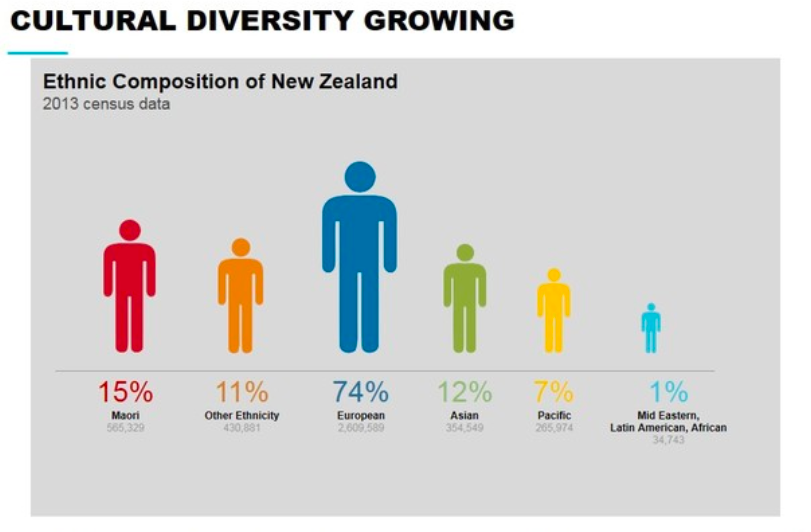

Success Criteria: I can/have...
- I have understood key terminology such as immigration, diversity, multiculturalism, melting pot, assimilation. laws, embracing and discrimination.
- I have research the reasons why people leave their country of origin to live in New Zealand
- I have observed and understood that the cultural identity of my classmates are reflective of the diversity of people that live in NZ
- I have researched the data that shows the population types in NZ, according to regions.
- I have drew conclusions on whether the cultural identity in NZ, is well embraced or suffers through some from of discrimination
Activities:
- Research the definitions of the various vocabulary:immigration, diversity, multiculturalism, melting pot, assimilation. laws, embracing and discrimination.
- Give reasons why people leave their country of origin to live in New Zealand. Find at leat 2 newspaper articles to support your discussions.
- Through research data, find out what is the population dynamics in New Zealand according to the different Nationalities, ethnicities and the range of cultures that co exist here( Refer to statistics NZ)
- What does the diverse population of NZ mean to you? Is NZ diverse or only a few regions? Could there be proberbal reasons for this?Justify your answers with supporting articles.
- Do you think that some cultural identities in New Zealand experience problems with settling in? Do they also experience problems with been accepted in their new home. Debate / discussion in class.
- Think of ways in which people of various cultures are celebrated in NZ: Create a visual that demonstrates how this is practiced: eg Waitangi Day, Chinese New Yea, Diwali, etc.
- Through research discover ways in which people are often discriminated based on race, religion, class, gender orientation or in any other form? Are there laws to protect people that are discriminated. Discuss. refer to Human Rights Commission NZ.
- What are your views about discrimination of any kind that exists in NZ. What advice would you give to help reduce or resolve this issue .
- Explain what are the human rights of people in the world and that of living in New Zealand. Draw connections specifically to the diverse. cultural identity of nZ
- Watch the Video of refugees that arrive in NZ...your views.
Resources:
Demographics of New Zealand - Wikipedia
Immigration New Zealand
New Zealand's population reflects growing diversity | Stats NZ
Racism in New Zealand Runs Deep | Newsroom
'Racism is well and alive' in New Zealand - Race Relations ...
Ethnic group summaries reveal New Zealand's multicultural ...
https://www.stats.govt.nz › news › new-zealands-popula...22/09/2019 — According to the 2018 Census, 3,297,864 people – or 70.2 percent of theNew Zealanders talk about multiculturalism Vision - Collective ...
Multicultural festival in New Zealand's Wellington celebrates ...
Write here...EXPLORE / TŪHURA learning intentions:
- We are EXPLORING...to research vocabulary and definitions linked to Culture and identity.
- We are EXPLORING...to collect information about ourselves: who am I? 9 interview with family) based on values/ region/ culture/ interest and if there is an immigration story attached to you/
- We are EXPLORING...to recognise that cultural identity is shaped by various factors ( eg media/ immigration. wester ideals/ peer pressure and other influences.
FOCUS / ARONGA learning intentions:
- We are FOCUSING...on understanding the various cultural identities that live in Auckland and in New Zealand therefore identifying and comparing population groups in one city to another.
- We are FOCUSING...on deducing what makes us similar and what defines us as unique and different, thus identifying barriers that threaten ones identity.( melting pot analysis)
- We are FOCUSING...on enhancing our understanding what does it mean to be Kiwi. ( intrinsic and extrinsic ideals)
-
Kia ora...students and welcome to week 3. Continuation this week will will explore and research the population dynamics of New Zealand. This will gives us insight that the cultural identity in NZ is diverse and changing due to various socio- economic factors, that we will investigate.


Success Criteria: I can/have...
- I have understood key terminology such as immigration, diversity, multiculturalism, melting pot, assimilation. laws, embracing and discrimination.
- I have research the reasons why people leave their country of origin to live in New Zealand
- I have observed and understood that the cultural identity of my classmates are reflective of the diversity of people that live in NZ
- I have researched the data that shows the population types in NZ, according to regions.
- I have drew conclusions on whether the cultural identity in NZ, is well embraced or suffers through some from of discrimination
Activities:
- Research the definitions of the various vocabulary:immigration, diversity, multiculturalism, melting pot, assimilation. laws, embracing and discrimination.
- Give reasons why people leave their country of origin to live in New Zealand. Find at leat 2 newspaper articles to support your discussions.
- Through research data, find out what is the population dynamics in New Zealand according to the different Nationalities, ethnicities and the range of cultures that co exist here( Refer to statistics NZ)
- What does the diverse population of NZ mean to you? Is NZ diverse or only a few regions? Could there be proberbal reasons for this?Justify your answers with supporting articles.
- Do you think that some cultural identities in New Zealand experience problems with settling in? Do they also experience problems with been accepted in their new home. Debate / discussion in class.
- Think of ways in which people of various cultures are celebrated in NZ: Create a visual that demonstrates how this is practiced: eg Waitangi Day, Chinese New Yea, Diwali, etc.
- Through research discover ways in which people are often discriminated based on race, religion, class, gender orientation or in any other form? Are there laws to protect people that are discriminated. Discuss. refer to Human Rights Commission NZ.
- What are your views about discrimination of any kind that exists in NZ. What advice would you give to help reduce or resolve this issue .
- Explain what are the human rights of people in the world and that of living in New Zealand. Draw connections specifically to the diverse. cultural identity of nZ
- Watch the Video of refugees that arrive in NZ...your views.
Resources:
Demographics of New Zealand - Wikipedia
Immigration New Zealand
New Zealand's population reflects growing diversity | Stats NZ
Racism in New Zealand Runs Deep | Newsroom
'Racism is well and alive' in New Zealand - Race Relations ...
Ethnic group summaries reveal New Zealand's multicultural ...
https://www.stats.govt.nz › news › new-zealands-popula...22/09/2019 — According to the 2018 Census, 3,297,864 people – or 70.2 percent of theNew Zealanders talk about multiculturalism Vision - Collective ...
Multicultural festival in New Zealand's Wellington celebrates ...
Write here...FOCUS / ARONGA learning intentions:
- We are FOCUSING...on understanding the various cultural identities that live in Auckland and in New Zealand therefore identifying and comparing population groups in one city to another.
- We are FOCUSING...on deducing what makes us similar and what defines us as unique and different, thus identifying barriers that threaten ones identity.( melting pot analysis)
- We are FOCUSING...on enhancing our understanding what does it mean to be Kiwi. ( intrinsic and extrinsic ideals)
-
Kia ora... students. From this week you will working in teams to research how cultural identities have been exploited and discriminated, throughout the world. Our focus will be looking at children who have been subjected to Human Rights violations in the world.
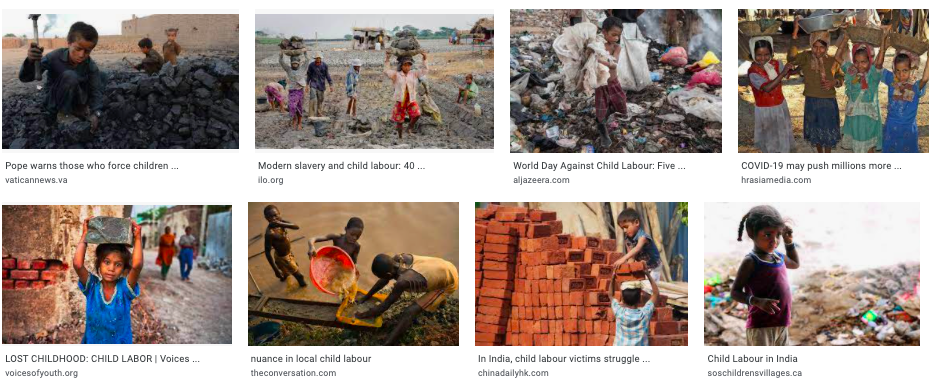
Success Criteria: I can/have...
- I have understood the meaning of key definitions like human rights, human rights violations, justice and discrimination.
- I have an understanding of the key articles in the United Nations Declaration of Human Rights
- I have began researching ONE type of discrimination children are subjected to in the world
- I have began to plan my research using the template provided
- I have started to research ideas using a range of resources
- I have communicated my ideas through an interesting visual such as a video or slideshow.
Activities:
- Find key definitions to Human rights, Human Rights violations, discrimination, justice, peace, law, protests.
- Research what are the Articles to the United Nations Declaration. ( read through the articles.
- Why is it important that all cultures/ people in the world are treated fairy and equally? Discuss your answer.
- Class discussion on discrimination and children. Discuss ways children are treated unfairly and are discriminated?
- In-depth idea: Child labour.
- Research definition of child labour. Indicate key words that link with this concepts. What is the global statistics for this =human rights violations. Research statistics also according to age and gender. Provide a world map that indicates what work children are involved with.
- Example used is Children at work on cocoa farms in Ghana. Based on the video give an analysis on what you have. What are the challenges and problems children face as labourers. Discuss this according to the social, environmental, economic and emotional harm they undergo.
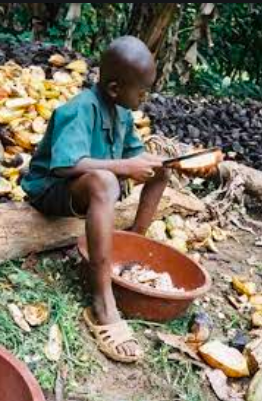 Chocolate sure does taste good. But a 16x9 investigation in Ghana uncovers a nasty truth - many cocoa beans in that country are ...
Chocolate sure does taste good. But a 16x9 investigation in Ghana uncovers a nasty truth - many cocoa beans in that country are ... - Who supports theses children. Think of strategies used by governments, NGS na d fair trade.
- What solutions or advice would you offer to rectify this global problem. Indicate ways that are culturally responsive and violable to both the child and the community
- Communicate your findings with the class.
- What is fair trade and discuss their role.
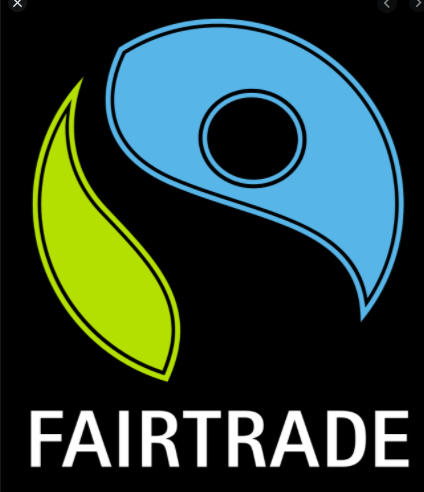
Homework:/ Resources:
Definition: What is meant by child labour? - ILO
Child Labour - Humanium
Causes and Consequences of Child Labour in Ethiopia - ILO
The Health Impact of Child Labor in Developing Countries ...
Eliminating and Preventing Child Labour - ILO
Five ways we can help to eliminate child labour
Child labour - - Fairtrade International
FOCUS / ARONGA learning intentions:
- We are FOCUSING...on understanding the various cultural identities that live in Auckland and in New Zealand therefore identifying and comparing population groups in one city to another.
- We are FOCUSING...on deducing what makes us similar and what defines us as unique and different, thus identifying barriers that threaten ones identity.( melting pot analysis)
- We are FOCUSING...on enhancing our understanding what does it mean to be Kiwi. ( intrinsic and extrinsic ideals)
-
Good Morning...students for this week , with links to child discrimination , will research on China's One child Policy, that was practiced for more than 3 decades.
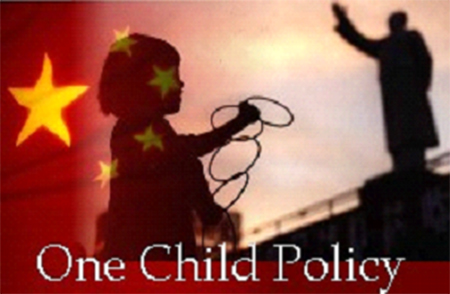
Activities: Group 1
- See video on population growth and the need to come up with One Child Policy in China
- Through a presentation design, in pairs research what is this policy and how has it functioned over the past 4 decades in China.
- In your presentation include the following: Location/Map, Why dis China started this policy, what are the positive and negative impacts of this policy, Discuss how rural areas in China is affected differently to Urban areas in China, Discuss how China can learn from other countries models about population reduction, compare China to one other country that has a population control measures, discuss the law today, what recommendation would you have for China to implement as an alternative.
- Research an article that shows the positive effect of this policy.Research one article that shows its and negative impacts.
- What are the consequences to those that have more than once child.
- Is this is line with Chinese culture and heritage. Explain your thoughts
- Think of other strategies that may reduce population growth and be a way forward for China to adopt.
- How has the world responded to this issue. Consider adoption strategies, views and immigration trends.
- Group2: Provide a map of china, read the resource link: and write in your own words what this means. Provide your view point.people.howstuffworks.com/one-child-policy.htm
- List 2 impacts of this policy
Learning Intentions: We are learning to (WALT)...
- Discover what is meant by China"s one child policy
- Understand the reasons why it was implemented
- Research the effects it has had onto society from the start until today
- Provide a view point and possible models to reduce population growth in china
Success Criteria: I can/have...
- Understood the One child Policy in China and reasons for its use
- Determined the impacts it has had over the past 40 years
- Created strategies as solutions to the population growth problem in China
Resources:
Map of China, you-tube video, Staistics on population growth, artilcles:China's One Child Policy - English Online
www.english-online.at/geography/world.../one-child-policy-in-china.htm
One-child policy provides economic benefits, social disadvantages ...
www.statepress.com/.../one-child-policy-provides-economic-benefits-soc...
THE SOCIAL IMPACT OF CHINA'S ONE-CHILD POLICY - MIT
web.mit.edu/lipoff/www/hapr/summer03_security/CHEN.pdf
-
Good Morning... for this week is a further research Presentation on China's One Child Policy.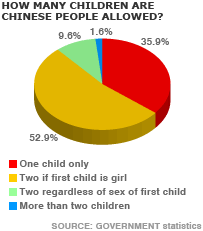
Activities:
- Evaluate the cartoon on one child policy... as well as family planning strategies for developing countries.
- Complete the design and research for this topic idea. Ensure you use maps, statistics, and images that will support your information.
- Information includes: define China's One child Policy, Why was there a need to control the population in china/ consider the economic and environmental effects/ Discuss the social/cultural and other implications this policy has had/ compare with one other country/determine a way forward
- Ensure that you are able to compare and contrast the situation of China with other countries globally. Consider Parts of Africa that may have similar trends
- In your teams you are required to present your ideas.
- Be prepared for debate and questions from the class.
Learning Intentions: We are learning to (WALT)...
- Work as a team and delver our presentations with good communications skills
- Engage in debate and critical thinking.
Success Criteria: I can/have...
- Worked as a team and presented an informative research on China's One child policy
- Used unique vocabulary
- Drew on comparisons globally
- Engaged in debate
Resources:
Cartoons, maps, comparison with Africa (images and laws).Presentation skills resources.Homework:
Write here... (please clearly identify the due date of the homework)PLAN & DO / WHAKAMAHI learning intentions:
- We are PLANNING... to design graphs and other data that demonstrate the cultural profile of our class and compare this with date of the the population groups that exist is Auckland and other cities in NZ. We are planning to deduce similarities and differences based on this data
- We are planning to apply what I know about myself and make a cultural kite that reflects my cultural identity.
-
Kia ora...students. For this week we will examine one social problem that is prevalent in many developing countries, that is Child Soldiers.

Learning Intentions: We are learning to (WALT)...
- Identify one case study that harbors child soldiers
- Examine the economic, political and social conditions of this country
- Research why adopt a child soldiers as a norm into society
Success Criteria: I can/have...
- Understood the countries that implement this social injustice of child soldiers
- Examined reasons for child soldiers to be in place: Community protection vs Ethics
Activities:
- By working in groups of three identify one case study that indicates the plight of child soldiers. Examine the history as well as socio-economic patterns of this country.(consider case studies such as Ghana, Rwanda, Syria, Afghanistan,Iraq
- Explain critically their involvement in war and protection.Discuss key reasons for thier involvement
- Discuss the social /cultural/ emotional/ physical / political/ environmental and economic impacts this social injustice brings.
- Watch documentary on Child soldiers in the Middle East
- What are your thoughts about this human injustice
- Resources:
- Newspapers/case studies/ images/ you-tube clips/maps
- Resources:
Child Soldiers - Children in Conflict
www.child-soldier.org/Child Soldiers International
www.child-soldiers.org/11 Facts About Child Soldiers | DoSomething.org ...
https://www.dosomething.org/facts/11-facts-about-child-soldiers
PLAN & DO / WHAKAMAHI learning intentions:
- We are PLANNING... to design graphs and other data that demonstrate the cultural profile of our class and compare this with date of the the population groups that exist is Auckland and other cities in NZ. We are planning to deduce similarities and differences based on this data
- We are planning to apply what I know about myself and make a cultural kite that reflects my cultural identity.
PLAN & DO / WHAKAMAHI learning intentions:
- We are PLANNING... to design graphs and other data that demonstrate the cultural profile of our class and compare this with date of the the population groups that exist is Auckland and other cities in NZ. We are planning to deduce similarities and differences based on this data
- We are planning to apply what I know about myself and make a cultural kite that reflects my cultural identity.
-
Kia ora...students. For this week we will study what support has been given to reduce child soldiers in various countries.Researching ideas based on international aid/ governmental assistance and self help

Activities:
- By referring to your individual case study, research what laws or policies that the government has developed to stop the child soldier crisis.
- Has there been any international support such as from the United Nations or Human Rights Commission
- Discuss how you would address this problem if you had the power and means to stop child soldiers in your chosen location.
- Show critically your opinion.
- Discuss what is meant by self help strategies.
- See documentaries in class strategies to reduce children at war
- In class evaluation of articles that addresses recommendations to child soldiers
Learning Intentions: We are learning to (WALT)...
- Through various case studies understand the role of government in reducing child soldiers
- What strategies have the united nations adopted
- What are human rights of children involved with war and how has the Human rights commission assisted in reducing child soldiers
- Your critical opinion
Success Criteria: I can/have...
- understood the various stakeholders and their attempt(if any) to reduce child soldiers
- Provide a critical opinion about this social injustice
- Understand that it is not necessarily a forced activity but also one of free will
Template for essay submission(Assessment 3)Introduction:
Recommendation 1: International help
Recommendation 2: Governmental Assistance
Recommendation3: Self Help
Recommendation 4: Global Awareness Strategies
Recommendation 5: Community Engagement
Recommendation 6: United Nations
Conclusion
Bibligraphy
HOMEWORK:See image below and discuss what is Red Hand Day. What do you think of this global awareness project.Write a short paragraph

Resources:
End the Use of Child Soldiers | Cultures of Resistance
culturesofresistance.org/end-child-soldiersChild Soldiers | International Rescue Committee (IRC)
www.rescue.org/child-soldiers
Help Child Soldiers
www.helpchildsoldiers.com/
PLAN & DO / WHAKAMAHI learning intentions:
- We are PLANNING... to design graphs and other data that demonstrate the cultural profile of our class and compare this with date of the the population groups that exist is Auckland and other cities in NZ. We are planning to deduce similarities and differences based on this data
- We are planning to apply what I know about myself and make a cultural kite that reflects my cultural identity.
PLAN & DO / WHAKAMAHI learning intentions:
- We are PLANNING... to design graphs and other data that demonstrate the cultural profile of our class and compare this with date of the the population groups that exist is Auckland and other cities in NZ. We are planning to deduce similarities and differences based on this data
- We are planning to apply what I know about myself and make a cultural kite that reflects my cultural identity.
-
Good Morning...students. This week you will examine what is fair trade and how this applies to child labor.

Activities:
- See images on the white board on fair trade.
- Define what do you think is fair trade.
- See slide share on white board on fair trade Cocoa production in Ghana. Discuss your views.
- See video on fair trade principles.Discuss your views here.
- By working in teams of two write a letter to the minister of trade and export on products that is found in our food stores.
- Think of how can these products be replaced with fair trade products. Do you think NZ consumers will change their attitudes and spending choices should they be aware of the human injustice behind a food product?Justify your answers
- Learning Intentions: We are learning to (WALT)...
- To define and understand what is fair trade
- Understand the principles and reasons for this form of trading
- Design a letter to our ministry about better food choices in our food stores
- Examine whether this will change mindsets i and spending choices n NZ
Success Criteria: I can/have...
- understood the meaning, principles, application of fairtatrade
- written a letter to justify better food choices imported to New Zealand
Resources:
Fairtrade International / About / What is Fairtrade?
www.fairtrade.net/what-is-fairtrade.html
World Fair Trade Organization | Welcome to the source of ...
wfto.com/
10 Principles of Fair Trade - World Fair Trade Organization
wfto.com/fair-trade/10-principles-fair-trade
Fairtrade products - Fairtrade Foundation
Fairtrade International | SlideShare
www.slideshare.net/fairtrade
Free Trade, Fair Trade and Human Rights - SlideShare
www.slideshare.net/Halligan/free-trade-fair-trade-and-human-rights
www.fairtrade.org.uk/products.htm
Homework:
Write here... (please clearly identify the due date of the homework) -
Good Morning...students. This week you will research Trade Aid and its principles that support children at work.
We will also do a reflection activity and an introduction into term 3 context.
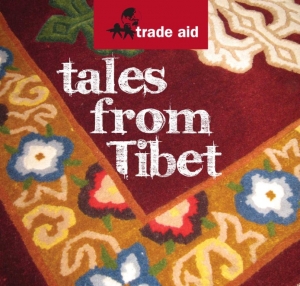
Activities:
- Create an information chart on trade aid explain what is it/ its principles/ how has this been effective in addressing child labor/ stores and its functions globally.
- Do you think organizations like trade aid help reduce the global social injustice of child labor. Explain your answer
- See video on trade Aid
- Go onto the website on trade Aid NZ, and examine its role in this country. How effective has this been to us as consumers? Explain critically.
Learning Intentions: We are learning to (WALT)...
- To understand what is trade and and its effect in changing consumer power from child labor products to one that is in line with human justice.
- create an informative chart based on this idea
- understand the effect or impact trade aid has on NZ consumers
Success Criteria: I can/have...
- CREATED AN INFORMATION CHART ON TRADE AID
- Understood its relevance and effect to NZ consumers
Resources:
Principles of Fair Trade - tradeaid.org.nz
Adwww.tradeaid.org.nz/fairtradeprinciplesTimeline - Trade Aid
https://www.tradeaid.org.nz/index.php/page/45/label/Timeline
Stories of Change - Trade Aid
https://www.tradeaid.org.nz/index.php/page/impactstories
Homework:
Write here... (please clearly identify the due date of the homework)REFLECT / WHAIWHAKAARO learning intentions:
- We are REFLECTING...the data that demonstrates the different demographic profiles in different regions in NZ
- We are reflecting on ourselves and what makes us unique. Reflecting how my cultural identity is also shaped by immigration, assimilation and adaptation
- We are reflecting on gaps and challenges to our learning and generate new ideas to overcome these barriers, so that we are more prepared an informed in the future.
REFLECT / WHAIWHAKAARO learning intentions:
- We are REFLECTING...the data that demonstrates the different demographic profiles in different regions in NZ
- We are reflecting on ourselves and what makes us unique. Reflecting how my cultural identity is also shaped by immigration, assimilation and adaptation
- We are reflecting on gaps and challenges to our learning and generate new ideas to overcome these barriers, so that we are more prepared an informed in the future.
-
Kia ora...students and welcome to Term 3. From this week you will be introduced to the idea: What is business and apply your design and innovation of your cultural product to understanding in the world of business and marketing.

Achievement Objectives: Understand how economic decisions impact on people, communities, and nations.
Understand how people seek and have sought economic growth through business, enterprise, and innovation.
Understand how people define and seek human rights.
Big Idea: Business and MarketingLearning Intentions: We are learning to (WALT)...
- to watch the dragons den and grasp the concept of innovation and business
- think of how can dragons den apply to myself if i were to start my own business
- research role models that are successful globally in business
- start to think of a business idea.
Success Criteria: I can/have...
- watched and understood the Dragons Den where I will later apply to innovating and starting a business
- researched key people that are successful in business
- in teams start to draft my business idea.
Activities:
- Lets us brainstorm important words that link with business. Examples include: innovation/ creativity/ cost/ materials/ import/export/ budget/ profit/balance sheet/ outsourcing/ ambition/ online sales/ stall/ marketing. Examine meaning to these words.
- Have a look at the cartoon that illustrates what is business.What are your views.Discuss what is meant by business accumen?
- Whom in the class thinks that they will be a future entreprenuer. Why?
- Research one successful business person in the world. What have they achieved? Give a short summary of his/ her achievements.See examples of top rich list on Time Magazine.
- Research what are the characteristics of business and why these are important?
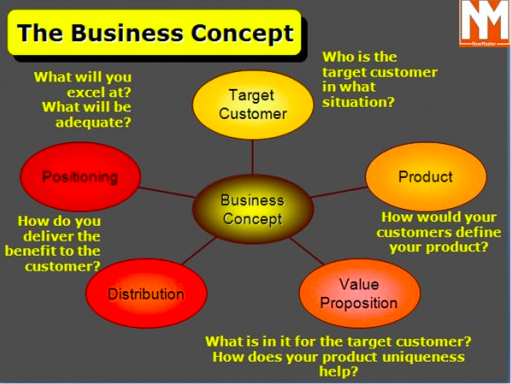
- By using the Dragons Den as your inspiration you will work in teams of 5 to create a business plan/ idea and market your your chosen cultural product.See example of business plan on the white board
- Class will Watch a few episodes of the dragons den and make notes on innovation skills/ ideas/ communicating skills/ and intended profits to be made.Take notes on skills you will use to present your cultural item through a Dragons Den activity.
- Think of how you would create a business plan that would not compromise the cultural meaning and value of your item. In other words whereby respect and understanding is still applied with your item, although it is sold.
Resources:
EXPLORE / TŪHURA learning intentions:
- We are EXPLORING...Business leaders from around-the world and the trends. inspiration they offer
- We are EXPLORING...business concepts and definitions
- We are EXPLORING...Connect business with consumer rights and ethical practices
-
Kia ora...students and welcome to week 2. For this week you will research in more detail what is a business plan and the 4 P's of Marketing.Also, to determine what is ethical business and how this would be applied to your product, that is ethically designed and environmentally friendly.

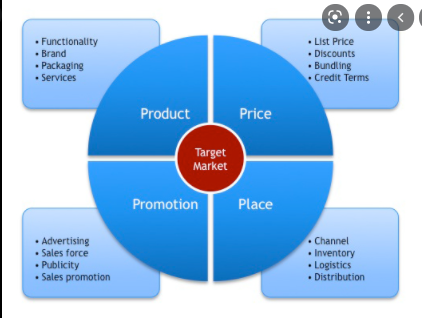
Achievement Objectives: Enter AO's here
Big Idea: Changes and Challenges
Learning Intentions: We are learning to (WALT)...
- understand what is a business plan.
- understand what is business ethics
- understand the 4 P's of marketing
- integrate the 4 ps into a business idea
Success Criteria: I can/have...
- researched and understood a business plan and the 4 P's of marketing whereby these are integrated into your business idea
Activities:
- Watch a video on what is a business plan. Discuss your views.
- See white board on what a business plan looks like. Take note of the format and key principles that you need to abide too
- 3) What is meant by ethics and business and how would you apply this to your product.
- Research what are the 4 ps of marketing. See video on the 4p's and write notes on how these are practiced in everyday businesses.
- By working in groups of 4 or 5, adopt the business plan and 7Ps into your business idea.
- Use this template: Business name/ group/ business logo/ image of your product with labels and materials used/ is it NZ made or shipped into NZ/ cost of product/to whom is it target/ impact it will have onto your customers/ how will you market this idea/ where will you promote this product idea/ discuss packaging details/projected profits.
- View examples on the white board. Think of products that would make a difference to someone who is in need.
- You are to think of your business name and create a logo that would go on the product you design.
Homework:
Write here...FOCUS / ARONGA learning intentions:
- We are FOCUSING...on developing our understanding on the principles of marketing
- We are FOCUSING...explaining and adapting a business plan to our future business projects
- We are FOCUSING...on choosing a product or service that is environmentally sustainable and marketable to a New Zealand audience
-
Kia Ora Students. For this week we will research and have an understanding of The role of consumers in business. Protocols and ethics, Over consumption: Globalisation.
This would be a video based activities so that it can help support you with the design of your product, ie a product that is ethical, legal( in NZ) and is environmentally friendly.
Video 1:
Video 2:Video 3Why I'm an Ethical Consumer ... sugar and salt products that are often irresponsibly marketed to children or ...6/04/2021 · Uploaded by Ethical ConsumerTwo companies perceived as irresponsible ... the corporate responsibility (or irresponsibility) of companies ...7/05/2018 · Uploaded by Jeanne CassiersBusiness ethics is the study of appropriate business policies and practices regardingpotentially ...But: how do major global challenges such as climate change and biodiversity loss affect forests globally, and ...17/04/2020 · Uploaded by European Forest Institute22/06/2019FOCUS / ARONGA learning intentions:
- We are FOCUSING...on developing our understanding on the principles of marketing
- We are FOCUSING...explaining and adapting a business plan to our future business projects
- We are FOCUSING...on choosing a product or service that is environmentally sustainable and marketable to a New Zealand audience
-
Kia ora...students. For this week you will apply your business skills knowledge to make a prototype of your product and have a class scenario of Dragons Den.

Achievement Objectives: Enter AO's here
Big Idea: Business and marketing
Learning Intentions: We are learning to (WALT)...
- Design and Create you business product
- Market your product through a class senario Dragons Den.
Success Criteria: I can/have...
- I have created a unique and interesting product and have marketed this through a play roll session of Dragons Den.
Activities:
- Think of your resources required to make your product. Create an instruction list" how to" or step by step guide.
- By working in your teams, begin creating your prototype. Consider the product design/image/materials/logo/colour/impact it will have onto the audience.See examples on the white board such as Zulu Jewellery, Chinese vases, Indian sweet dishes, Islamic scarves.
- Also See examples of products designed and marketed by the youth, globally.
- Begin Creating with a commitment of collaboration.
- Think of the projected growth your product will have in a month as well as annually.
- How would you balance saes with the cultural respect and the limitation of mass production.
- What do you think of the over use of cultural products. Explain both the economic and socio-cultural impacts these may impose.
- Once you have completed each team will have to market their product through a a Dragon's Den scenario. The Dragon team will change for each team that presents.
- Questions and expectations from Dragons will include the viability of your product/ cost and projected profits/
Resources:
PLAN & DO / WHAKAMAHI learning intentions:
- We are PLANNING... to watch dragons den and shark tank to prepare us how to market our products/ service
- We are planning to work in a team a create an environmentally friendly and ethical resource/ or service.
- We are planning to market our idea in the form of a dragons den activity to the class.
-
Kia ora...students. For this week you will apply your business skills knowledge to make a prototype of your product and have a class scenario of Dragons Den.

Achievement Objectives: Enter AO's here
Big Idea: Business and marketing
Learning Intentions: We are learning to (WALT)...
- Design and Create you business product
- Market your product through a class senario Dragons Den.
Success Criteria: I can/have...
- I have created a unique and interesting product and have marketed this through a play roll session of Dragons Den.
Activities:
- Think of your resources required to make your product. Create an instruction list" how to" or step by step guide.
- By working in your teams, begin creating your prototype. Consider the product design/image/materials/logo/colour/impact it will have onto the audience.See examples on the white board such as Zulu Jewellery, Chinese vases, Indian sweet dishes, Islamic scarves.
- Also See examples of products designed and marketed by the youth, globally.
- Begin Creating with a commitment of collaboration.
- Think of the projected growth your product will have in a month as well as annually.
- How would you balance saes with the cultural respect and the limitation of mass production.
- What do you think of the over use of cultural products. Explain both the economic and socio-cultural impacts these may impose.
- Once you have completed each team will have to market their product through a a Dragon's Den scenario. The Dragon team will change for each team that presents.
- Questions and expectations from Dragons will include the viability of your product/ cost and projected profits/
Resources:
PLAN & DO / WHAKAMAHI learning intentions:
- We are PLANNING... to watch dragons den and shark tank to prepare us how to market our products/ service
- We are planning to work in a team a create an environmentally friendly and ethical resource/ or service.
- We are planning to market our idea in the form of a dragons den activity to the class.
-
Kia ora...students. For this week you will apply your business skills knowledge to make a prototype of your product and have a class scenario of Dragons Den.

Achievement Objectives: Enter AO's here
Big Idea: Business and marketing
Learning Intentions: We are learning to (WALT)...
- Design and Create you business product
- Market your product through a class senario Dragons Den.
Success Criteria: I can/have...
- I have created a unique and interesting product and have marketed this through a play roll session of Dragons Den.
Activities:
- Think of your resources required to make your product. Create an instruction list" how to" or step by step guide.
- By working in your teams, begin creating your prototype. Consider the product design/image/materials/logo/colour/impact it will have onto the audience.See examples on the white board such as Zulu Jewellery, Chinese vases, Indian sweet dishes, Islamic scarves.
- Also See examples of products designed and marketed by the youth, globally.
- Begin Creating with a commitment of collaboration.
- Think of the projected growth your product will have in a month as well as annually.
- How would you balance saes with the cultural respect and the limitation of mass production.
- What do you think of the over use of cultural products. Explain both the economic and socio-cultural impacts these may impose.
- Once you have completed each team will have to market their product through a a Dragon's Den scenario. The Dragon team will change for each team that presents.
- Questions and expectations from Dragons will include the viability of your product/ cost and projected profits/
Resources:
PLAN & DO / WHAKAMAHI learning intentions:
- We are PLANNING... to watch dragons den and shark tank to prepare us how to market our products/ service
- We are planning to work in a team a create an environmentally friendly and ethical resource/ or service.
- We are planning to market our idea in the form of a dragons den activity to the class.
PLAN & DO / WHAKAMAHI learning intentions:
- We are PLANNING... to watch dragons den and shark tank to prepare us how to market our products/ service
- We are planning to work in a team a create an environmentally friendly and ethical resource/ or service.
- We are planning to market our idea in the form of a dragons den activity to the class.
-
Kia ora...students. For this week you will apply your business skills knowledge to make a prototype of your product and have a class scenario of Dragons Den. Assessment due date: Dragons Den
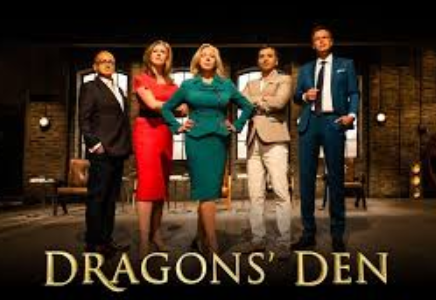
Achievement Objectives: Enter AO's here
Big Idea: Creative Connections
Learning Intentions: We are learning to (WALT)...
- Design and Create you business product
- Market your product through a class senario Dragons Den.
Success Criteria: I can/have...
- I have created a unique and interesting product and have marketed this through a play roll session of Dragons Den.
Activities:
- Think of your resources required to make your product. Create an instruction list" how to" or step by step guide.
- By working in your teams, begin creating your prototype. Consider the product design/image/materials/logo/colour/impact it will have onto the audience.See examples on the white board such as Zulu Jewellery, Chinese vases, Indian sweet dishes, Islamic scarves.
- Also See examples of products designed and marketed by the youth, globally.
- Begin Creating with a commitment of collaboration.
- Think of the projected growth your product will have in a month as well as annually.
- How would you balance saes with the cultural respect and the limitation of mass production.
- What do you think of the over use of cultural products. Explain both the economic and socio-cultural impacts these may impose.
- Once you have completed each team will have to market their product through a a Dragon's Den scenario. The Dragon team will change for each team that presents.
- see the video to support you with you presentation skills. Feb 7, 2015 - Uploaded by Victor AntonioPresentation Skills - How to Develop a Strong Presentation. Here are ... For more sales tips, presentation ...
- Questions and expectations from Dragons will include the viability of your product/ cost and projected profits/
Resources:
PLAN & DO / WHAKAMAHI learning intentions:
- We are PLANNING... to watch dragons den and shark tank to prepare us how to market our products/ service
- We are planning to work in a team a create an environmentally friendly and ethical resource/ or service.
- We are planning to market our idea in the form of a dragons den activity to the class.
-
Kia ora...students. For this week you will apply your business skills knowledge to make a prototype of your product and have a class scenario of Dragons Den. Assessment due date: Dragons Den

Achievement Objectives: Enter AO's here
Big Idea: Creative Connections
Learning Intentions: We are learning to (WALT)...
- Design and Create you business product
- Market your product through a class senario Dragons Den.
Success Criteria: I can/have...
- I have created a unique and interesting product and have marketed this through a play roll session of Dragons Den.
Activities:
- Think of your resources required to make your product. Create an instruction list" how to" or step by step guide.
- By working in your teams, begin creating your prototype. Consider the product design/image/materials/logo/colour/impact it will have onto the audience.See examples on the white board such as Zulu Jewellery, Chinese vases, Indian sweet dishes, Islamic scarves.
- Also See examples of products designed and marketed by the youth, globally.
- Begin Creating with a commitment of collaboration.
- Think of the projected growth your product will have in a month as well as annually.
- How would you balance saes with the cultural respect and the limitation of mass production.
- What do you think of the over use of cultural products. Explain both the economic and socio-cultural impacts these may impose.
- Once you have completed each team will have to market their product through a a Dragon's Den scenario. The Dragon team will change for each team that presents.
- see the video to support you with you presentation skills. Feb 7, 2015 - Uploaded by Victor AntonioPresentation Skills - How to Develop a Strong Presentation. Here are ... For more sales tips, presentation ...
- Questions and expectations from Dragons will include the viability of your product/ cost and projected profits/
Resources:
PLAN & DO / WHAKAMAHI learning intentions:
- We are PLANNING... to watch dragons den and shark tank to prepare us how to market our products/ service
- We are planning to work in a team a create an environmentally friendly and ethical resource/ or service.
- We are planning to market our idea in the form of a dragons den activity to the class.
-
Kia ora...students. For this week you will reflect on your terms learning whereby you will think of barriers and gaps to the design of your product. This would also include ways to improve your collaboration with your team. From this week we will also begin to understand how to write a short essay, using good paragraph structures.

Success Criteria: I can/have...
- Reflected on my learning, collaboration as a team and the design of my product
- Thought of ways forward to make improvements for the future
Activities:
- By creating a PMI model, think of the pluses and minuses of how your'e learning went on this term, What ideas would you include to improve your collaboration and design of your product.
- How to write a short essay.Look at the white board using examples.
- Paragraph 1: Important that you have a good, clear impactful introduction. This can include a definition and ideas related to your question.
- Paragraph 2: Main ideas discusses in detail, with examples, comparisons, statistics, a quotation and your views.
- Also create a plan before you write.
- Practice question in class: A:Discuss how one human rights of children are violated in New Zealand. Also discuss how these children have overcome the social injustice? B: Discuss racial discrimination and its impacts onto people in NZ. Also give an account of how people dealt with overcoming this violation.
- Write here
Homework:
Write here...REFLECT / WHAIWHAKAARO learning intentions:
- We are REFLECTING...on critiquing our team work practices in the design process and marketing process
- WE are Reflecting on measuring on standards of ethics through a survey
- We are reflecting on the gaps and barriers we have with the product/ service created
REFLECT / WHAIWHAKAARO learning intentions:
- We are REFLECTING...on critiquing our team work practices in the design process and marketing process
- WE are Reflecting on measuring on standards of ethics through a survey
- We are reflecting on the gaps and barriers we have with the product/ service created
-
Kia ora...students and welcome to the final week of term. For this week we will study ways to interpret resources eg political cartoons, historical images and government posters.
Success Criteria: I can/have...
- Understood what the key elements to interpret a resource.
- I have practised examples to improve my skills
Activities
1) Look at the historical images on the white board showing the early settlers in NZ: Think of what is the image portraying. Consider the time, vents possible actions or impacts that may have been centred around these images. These may be both positive and negative. Constrast thees to todays era. Your Views.
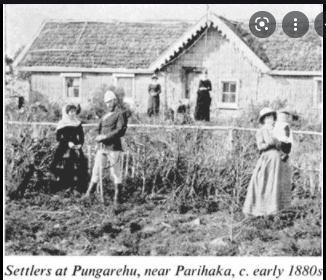
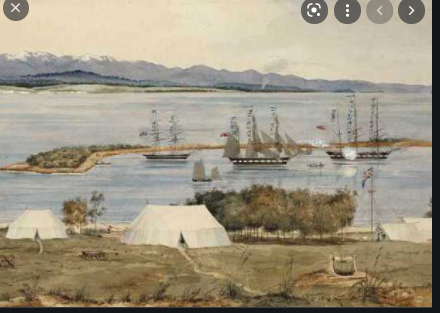
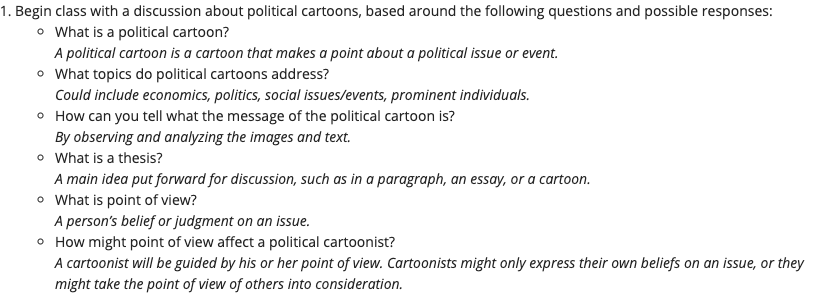
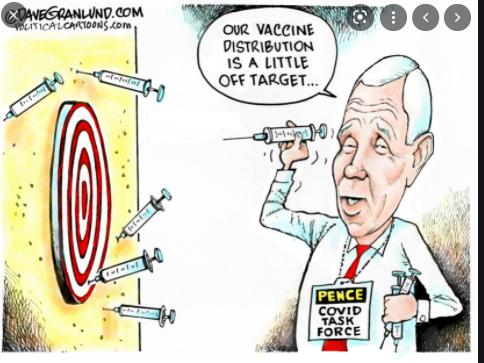
-
Kia ora...students and welcome to term 4, week 1. I hope everyone is feeling great and are ready to kickstart the term with a new context : UN Sustainable Goals. With this idea, we will focus on How these goals relate to Auckland
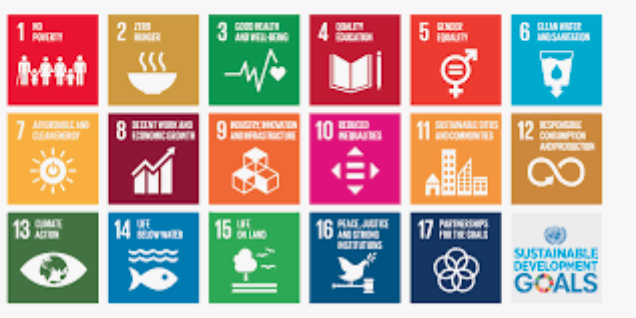
Success Criteria: I can/have...
- an understanding of the UN sustainable goals
- I have applied these to Auckland and surrounding regions
- Recapped vocabulary that links with environmental issues and sustainability
- an understanding of the map of New Zealand and Auckland .
Activities:Use Padlet to document reaserch and tasks
- Recap on vocabulary that links with environmental problems eg environmental, pollution, climate change, carbon emissions, seal level rise, acid rain, environmental protection, sustainability.
- Read and understand map of NZ. look for key cities. read and understand map of Auckland. Look for various land uses and residential areas.
- Read and interpret meaning to UN sustainable goals. how does any of these goals link to NZ and specifically to Auckland.
- Watch UN Sustainable Goals:
- 213K views3 years ago
JP Bervoets, Vice President, Community Foundations of Canada, provides a high-level overview as to what the UN SDGs are and ... 135K views3 years agoIn September 2015 the United Nations made history - 193 member states unanimously adopted the Sustainable Development ... - Watch video below. What are your views.The report also points out that, layered over all of this is climate change. It will not only have an impact on all of ...18/04/2019
- Discuss if there are any environmental problems that exist in NZ and specifically to Auckland. Who maybe responsible for these issues?
- Class divided into teams of 5 06. Each team to choose a region in Auckland. Research what environmental problem your chosen area is experiencing. At this stage you are discovering the location and possible problem. Next week you will be involved with an in depth plan of your study.
- Write here
Homework:
Write here...EXPLORE / TŪHURA learning intentions:
- We are EXPLORING...vocabulary and definitions that links with UN Sustainable Goals eg United Nations, government systems, laws and policies, business ventures, economic activities, environmental destruction, conservation, preservation, community involvement, stakeholders.
- We are EXPLORING...to understand and interpret maps eg NZ , Auckland and regional maps such as Flatbush and Auckland City
- We are EXPLORING...to use prior knowledge in determining if NZ is 100% pure or not? With justifications to our answer.
-
Kia ora...students and welcome to week 2, Term 4!For this week you will work on both CAT preparation tasks as well as UN Sustainable goals, applied to Auckland NZ.

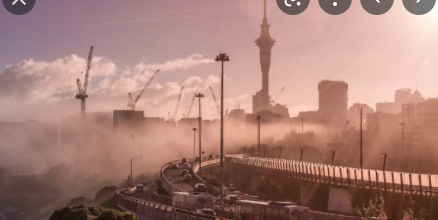
Success Criteria: I can/have...
- researched 2 case studies on pollution in Auckland and written as report on these.
- I have began to work on skills required for CAT test that includes short essay writing
Activities:
- New Zealand is regarded as 100% pure, especially as a branding when promoting tourism. Do you think this concept is justified or is far fetched from the truth? Explain your answer
- When you are driven around Auckland, what are your impressions of our environmental cleanliness? Is there any areas in particular that have a strong visual presence of pollution? Indicate the area and possible reasons for the environmental damage .
- Research one article that highlights an environmental problem to be found in the Auckland Region. Write a report based on this article that shows the location( map), reasons for the pollution, impacts and concerns from the community. State your views as well.
- Research a second article that indicates a different environmental problem also found in Auckland. State your views on this issue. How could it have been prevented.
- What UN Sustainable Goals apply to your 2 articles/ environmental issues addressed.
- CAT PREPARATION: Human Rights is an important concept that should be applied to all people from all walks of life, around the world and certainly in New Zealand.Write a 3 paragraph essay on One human Rights violation NZ eg Racism or gender inequality. In paragraph 1 indicate the issue and causes for this. Paragraph 2: what have been the impacts onto victims and how have communities responded to the issue. paragraph 3: offer your views and ways to resolve this violation in New Zealand
Homework:
Write here...EXPLORE / TŪHURA learning intentions:
- We are EXPLORING...vocabulary and definitions that links with UN Sustainable Goals eg United Nations, government systems, laws and policies, business ventures, economic activities, environmental destruction, conservation, preservation, community involvement, stakeholders.
- We are EXPLORING...to understand and interpret maps eg NZ , Auckland and regional maps such as Flatbush and Auckland City
- We are EXPLORING...to use prior knowledge in determining if NZ is 100% pure or not? With justifications to our answer.
-
Kia ora...students and welcome to week 3, Term 4!For this week you will continue to work on both CAT preparation tasks as well as UN Sustainable goals, applied to Auckland NZ.


Success Criteria: I can/have...
- researched 2 case studies on pollution in Auckland and written as report on these.
- I have began to work on skills required for CAT test that includes short essay writing
Activities:
- New Zealand is regarded as 100% pure, especially as a branding when promoting tourism. Do you think this concept is justified or is far fetched from the truth? Explain your answer
- When you are driven around Auckland, what are your impressions of our environmental cleanliness? Is there any areas in particular that have a strong visual presence of pollution? Indicate the area and possible reasons for the environmental damage .
- Research one article that highlights an environmental problem to be found in the Auckland Region. Write a report based on this article that shows the location( map), reasons for the pollution, impacts and concerns from the community. State your views as well.
- Research a second article that indicates a different environmental problem also found in Auckland. State your views on this issue. How could it have been prevented.
- What UN Sustainable Goals apply to your 2 articles/ environmental issues addressed.
- CAT PREPARATION: Human Rights is an important concept that should be applied to all people from all walks of life, around the world and certainly in New Zealand.Write a 3 paragraph essay on One human Rights violation NZ eg Racism or gender inequality. In paragraph 1 indicate the issue and causes for this. Paragraph 2: what have been the impacts onto victims and how have communities responded to the issue. paragraph 3: offer your views and ways to resolve this violation in New Zealand
Homework:
Write here...EXPLORE / TŪHURA learning intentions:
- We are EXPLORING...vocabulary and definitions that links with UN Sustainable Goals eg United Nations, government systems, laws and policies, business ventures, economic activities, environmental destruction, conservation, preservation, community involvement, stakeholders.
- We are EXPLORING...to understand and interpret maps eg NZ , Auckland and regional maps such as Flatbush and Auckland City
- We are EXPLORING...to use prior knowledge in determining if NZ is 100% pure or not? With justifications to our answer.
FOCUS / ARONGA learning intentions:
- We are FOCUSING...on developing an understanding of the many environmental problems that are found in Auckland( City and suburbs)
- We are FOCUSING...and clarifying why these problems occur: Is only local communities and businesses responsible or also the negligance of government reducing these problems
- We are FOCUSING...comparing Auckland to situations alike in other countries
-
Kia ora...For this week we will explore possible CAT question and prepare for these by developing our skills. Skills include essay writing: how to answer an essay . Also how to interpret images/posters/cartoons/ evaluate graphs and statistics and to apply is critical thinking to our answers.
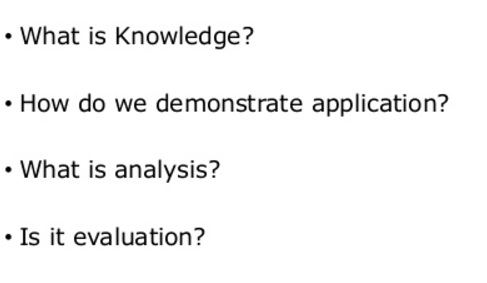
Achievement Objectives: Enter AO's here
Big Idea: Coast UN Sustainable Goals
Learning Intentions: We are learning to (WALT)...
- update our resources and CAT materials for CAT Test
- buddy share knowledge and skills
- prepare answers for possible CAT questions and time ourselves
Success Criteria: I can/have...
Prepare in advance for the upcoming CAT test
Activities:
- Update all work on MHOnline. I have already emailed all necessary resources to and questions to prepare for the CAT test
- I will take questions and concerns form the class to address in class/or online. . This will begin with ideas from term one. Write down and sketch the way I expect essays to be answered.
- There after as a class we will examine one question from your scope sheet.
- Thereafter, by working in independently, prepare essays based on all questions given in the scope sheet. Your should have a structure that includes: a good Introduction, topic paragraphs with explanations in detail as well as your views and , recommendations.
- For in-depth study of a question you are encourage to use quotations examples/ arguments with justifications/ statistics with an evaluation/ critical thinking/ comparisons and contrasts/ hypothesis/ and interpretation with you views.
- Rear articles on the Tokyo Olympics. Do you support this event that took place in midst of the pandemic? What could have been the problems and benefits of hosting the Olympics. Provide your views in detail.
Resources:
12 Study Skills for Exam Success | Good Luck Exams
Homework:
Write here... -
Kia ora...For this week we will explore possible CAT question and prepare for these by developing our skills. Skills include essay writing: how to answer an essay . Also how to interpret images/posters/cartoons/ evaluate graphs and statistics and to apply is critical thinking to our answers.

Achievement Objectives: Enter AO's here
Big Idea: Coast UN Sustainable Goals
Learning Intentions: We are learning to (WALT)...
- update our resources and CAT materials for CAT Test
- buddy share knowledge and skills
- prepare answers for possible CAT questions and time ourselves
Success Criteria: I can/have...
Prepare in advance for the upcoming CAT test
Activities:
- Update all work on MHOnline. I have already emailed all necessary resources to and questions to prepare for the CAT test
- I will take questions and concerns form the class to address in class/or online. . This will begin with ideas from term one. Write down and sketch the way I expect essays to be answered.
- There after as a class we will examine one question from your scope sheet.
- Thereafter, by working in independently, prepare essays based on all questions given in the scope sheet. Your should have a structure that includes: a good Introduction, topic paragraphs with explanations in detail as well as your views and , recommendations.
- For in-depth study of a question you are encourage to use quotations examples/ arguments with justifications/ statistics with an evaluation/ critical thinking/ comparisons and contrasts/ hypothesis/ and interpretation with you views.
- Rear articles on the Tokyo Olympics. Do you support this event that took place in midst of the pandemic? What could have been the problems and benefits of hosting the Olympics. Provide your views in detail.
Resources:
12 Study Skills for Exam Success | Good Luck Exams
Homework:
Write here...FOCUS / ARONGA learning intentions:
- We are FOCUSING...on developing an understanding of the many environmental problems that are found in Auckland( City and suburbs)
- We are FOCUSING...and clarifying why these problems occur: Is only local communities and businesses responsible or also the negligance of government reducing these problems
- We are FOCUSING...comparing Auckland to situations alike in other countries
-
You may learn and focus on your CAT English paper for this week.
-
PLAN & DO / WHAKAMAHI learning intentions:
- We are PLANNING... to innovate a solution to the specific problem we have research in Auckland eg reducing sewage leakage through construction of better pipe-works.
- We are planning to share this information wit Auckland city council
-
REFLECT / WHAIWHAKAARO learning intentions:
- We are REFLECTING...by assessing the quality of our information discovered and understood.
- WE are reflecting on our plan and do stage: is it realistic and achievable for Auckland





